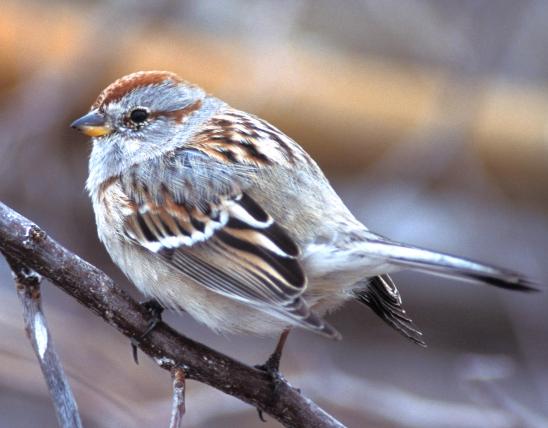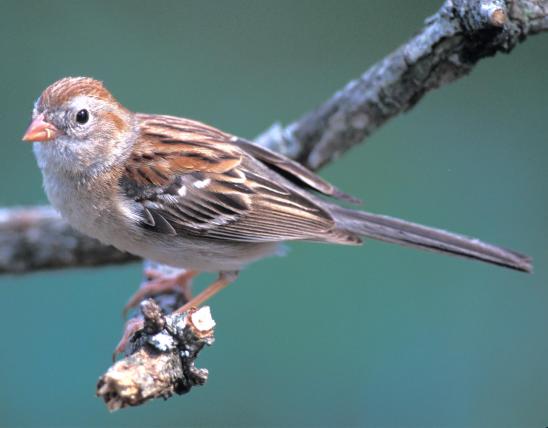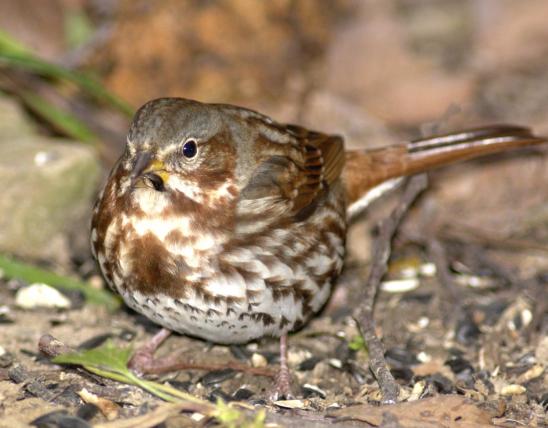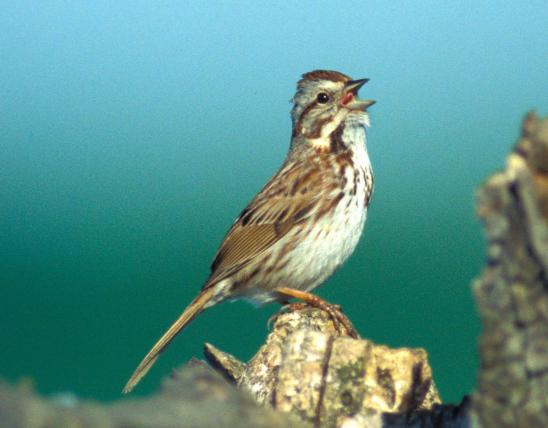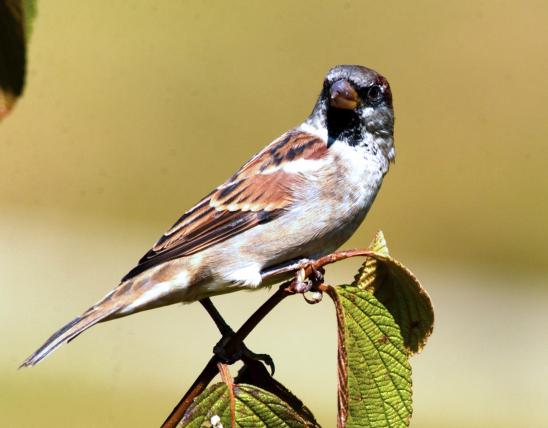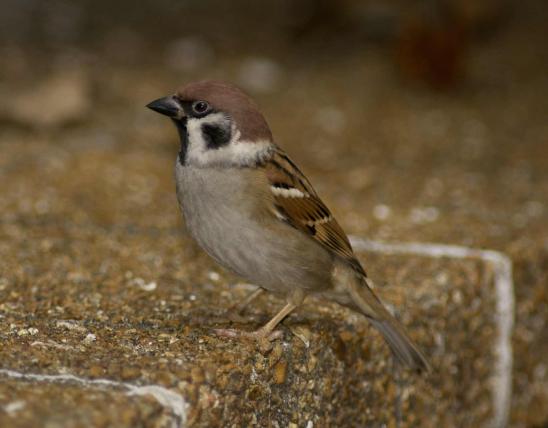
Chipping sparrow adult upperparts are streaked with dark rusty brown and gray, with a gray rump and head, with bright chestnut crown, white eyebrow, narrow black eyeline, and black bill. Note that the cheeks and nape of neck are clear gray. Underparts are light gray. Nonbreeding-season individuals have a streaked crown and buffy eyeline. Immatures are similar, but with streaking on the breast. Note that the rump is always gray, helping to separate this species from clay-colored sparrows in the fall. Song is a loud nonmusical “chipping” of the same note in rapid succession. Call is a high chip or tseep.
Similar species: Sparrow IDs can be tricky. Other common species with rusty crowns include the American tree sparrow, which has a rusty (not black) eyeline, a dark spot in the center of the breast, and bill dark above and yellow below (not all dark); here, it’s more likely to be seen in winter than in summer. The field sparrow has an orangish ear patch, no eyeline, pink bill, and white eyering.
Length: 5½ inches (tip of bill to tip of tail).

Common summer resident. As winter resident, casual in the south part of the state, accidental in the north.
Habitat and Conservation
Seen in pine forests, parks, lawns, and cemeteries, usually in open spaces with trees, where the grass is short and evergreens are present. They have adapted well to human-made, parklike habitats. Multiagency efforts to restore large tracts of Missouri’s native pine savanna habitat (a type of very open pine forest with prairie-like vegetation below) should also benefit this species, as well as northern bobwhite, yellow-throated and pine warblers, Carolina chickadee, and Bachman’s sparrow.
Food
Forages on the ground for insects and seeds. Also seen at bird feeders. As with many other sparrows, the seeds of grasses and of forbs (non-grass, non-woody plants or “weeds”) are their general diet, but during breeding season, they eat a larger percentage of insects. This extra protein in summer is required to nourish their growing families. In winter, chipping sparrows generally migrate far enough south so that snow cover won’t prevent them from finding seeds on the ground.
Status
Statewide. In winter, more common in southern parts of the state.
Life Cycle
Females build thin, flimsy cup nests out of grasses and thin roots, lined with mammal hair and other soft materials; these are usually positioned at the branch tips of shrubs or small trees 3–10 feet off the ground. A clutch comprises 2–7 eggs, which hatch in 10–15 days. At first the young are naked and helpless, but they are ready to fledge 9–12 days after hatching. There can be up to 3 broods a year.
Human Connections
“Chippies” have long been appreciated in America as a familiar, beloved dooryard bird, much like the robin and bluebird. But the house sparrow, introduced from Europe in the 1800s, has usurped the chipping sparrow and many other native birds from many people’s backyards.
Ecosystem Connections
It’s not a coincidence that most birds, usually requiring insects in order to feed their young, have their breeding time during summer, when insects are plentiful. Biologists note that much of the reason for northward migration in spring is the need to find bountiful food during breeding season.
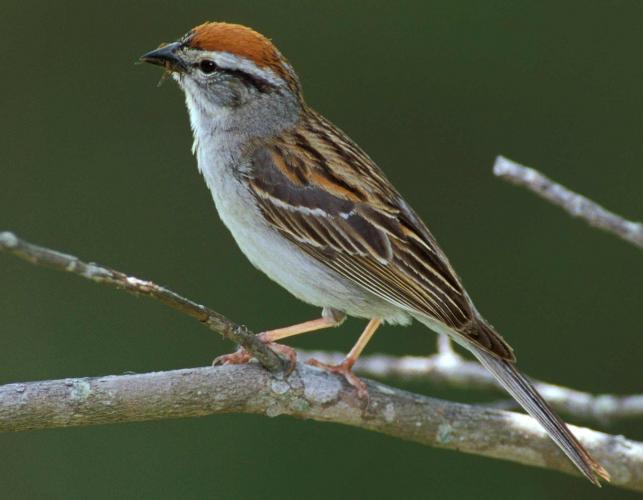
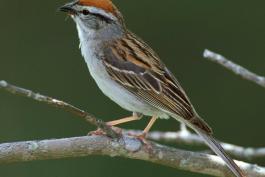
About 350 species of birds are likely to be seen in Missouri, though nearly 400 have been recorded within our borders. Most people know a bird when they see one — it has feathers, wings, and a bill. Birds are warm-blooded, and most species can fly. Many migrate hundreds or thousands of miles. Birds lay hard-shelled eggs (often in a nest), and the parents care for the young. Many communicate with songs and calls.






















